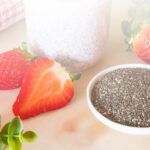Natural rubber is a sustainable, safe and versatile material that has become the heart of Rucan toys. Its plant origin, elastic properties and resistance make it the best choice for those seeking quality and well-being for their dogs.
Origin and properties of natural rubber
Rubber is obtained from latex, a substance that flows from the Hevea Brasiliensis tree, native to the Amazon. This material belongs to the elastomer family, known for its ability to deform and recover its original shape without losing strength.
History and evolution of rubber
For centuries, rubber was a resource exclusive to the Amazon basin. In the mid-19th century, its use spread to Europe, although it was difficult to work with: latex became sticky in the heat and brittle in the cold. It also darkened and coagulated when exposed to air.
Everything changed with the invention of vulcanisation in 1844, attributed to Charles Goodyear. This process stabilised the material, made it more resistant and expanded its industrial use. Over time, plantations spread to Asia and natural rubber became an essential resource for many sectors.
Unlike plastics or synthetic rubbers, natural rubber comes from a renewable source, making it much more environmentally friendly.
From tree to usable raw material
When a controlled cut is made in the tree’s bark, the latex flows out and is carefully collected. It is then filtered and mixed with water and other components that improve its mechanical strength. This initial mixture is very sensitive to heat, cold and light, so it needs to be stabilised in order to become functional rubber.
Processing and vulcanisation: strength and elasticity
Processing begins after the latex is collected, filtered, diluted with water and mixed with agents that reinforce its structure. At this stage, elements such as carbon black (which provides hardness and the characteristic dark colour) or silica, clay or gypsum are added if lighter finishes are desired.
The processing of latex balances elasticity with durability, resulting in a material capable of withstanding pressure, traction and temperature changes without losing flexibility.
The next step is vulcanisation, which is essential for giving natural rubber its final strength. This involves adding sulphur to the latex and subjecting it to heat to create chemical bonds that stabilise its structure.
Thanks to this process, the rubber acquires a firm elasticity, is resistant to abrasion and is able to maintain its properties even after continuous use.
Natural rubber versus synthetic rubber
Although both materials share elastic properties, their origin and environmental impact clearly differentiate them. Understanding these differences helps to comprehend why at Rucan we are committed to natural rubber.
Practical and environmental differences
Synthetic rubber is made from petroleum and generates waste that is difficult to recycle. Natural rubber, on the other hand, comes from a renewable source and can be safely decomposed at the end of its useful life. It is true that the treatments needed to stabilise latex can slow down its biodegradation, but it is still a much more environmentally friendly alternative and a more responsible option that is consistent with a philosophy of sustainable production.
Rucan’s commitment to responsible rubber
At Rucan, we believe that choosing good materials is a way of caring. That is why we work exclusively with natural rubber treated under controlled processes, guaranteeing safe, durable and environmentally friendly toys.
Conscious design and safe materials
Each piece is made from rubber that is free from BPA, phthalates and harmful additives. This material provides natural elasticity that can withstand even the most intense bites without splintering or deforming, maintaining a soft texture that is pleasant to the touch. This ensures that each toy is safe for your dog and sustainable for the planet.
In addition, before reaching your hands, each product undergoes resistance, hygiene and safety tests that guarantee its durability. The Rucan Tested Guarantee ensures that each toy meets the most demanding standards, offering a safe, responsible and long-lasting play experience.
Dog toys that are more than just toys
At Rucan, we understand play as a form of wellbeing. We don’t design simple toys, but tools that stimulate the mind, strengthen bonds and promote relaxation.
To name a few, the DogBall promotes active play and exploration, the Stick 5 encourages concentration and interaction, and the LickLock stimulates calmness through licking. All are made from the highest quality natural rubber and designed to accompany different moments of the day.






